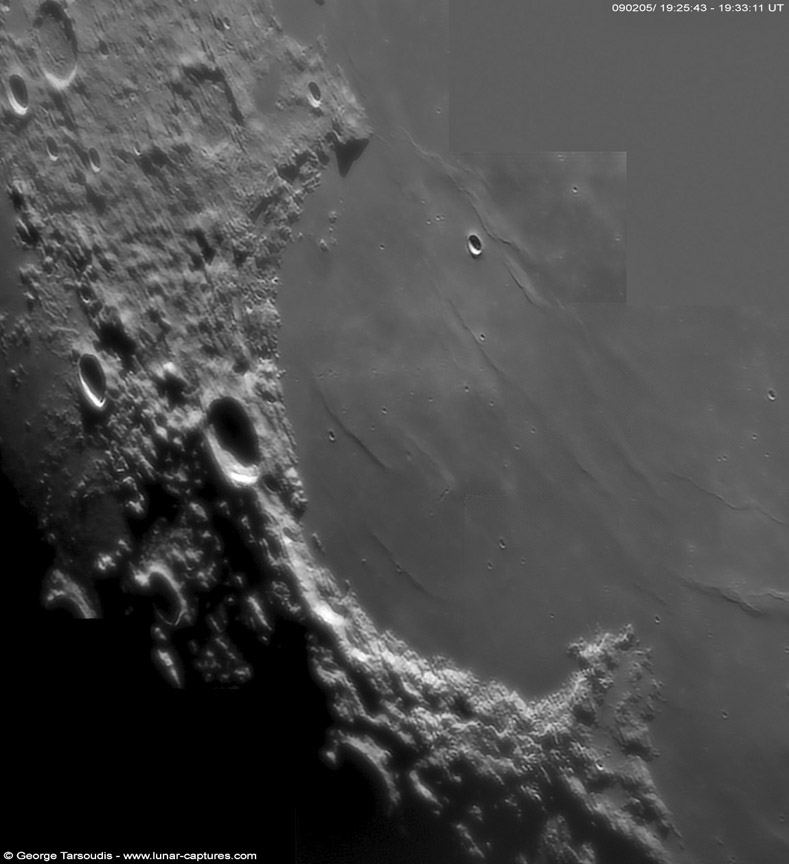Difference between revisions of "June 3, 2018"
(Created page with "__NOTOC__ =Mystery Lines= Originally published February 22, 2009 <!-- Start of content --> <!-- ws:start:WikiTextHeadingRule:2:<h1> --> <!-- ws:start:WikiTextLocalI...") |
(No difference)
|
Revision as of 01:04, 3 June 2018
Mystery Lines
Originally published February 22, 2009

image by George Tarsoudis, Greece
Sinus Iridum is one of the most beautiful landforms on the Moon, and George's view brings out morphological features I hadn't paid enough attention to in the past. Ignore the mare ridges on the bay's floor, and the slump mounds along the bottom of the wall. Instead look closely at the region between Bianchini (cutting the Jura Mountains and full of shadows) and Maupertuis (upper left disfigured crater). I see two linear features. First is a trough-like depression that runs from Promontory Laplace (near Maupertuis) to La Condamine (smaller shadowed crater left of Bianchini). This is incomplete, but definite - see Mike Wirth's opposite illumination view for confirmation. Is this a smaller version of the Alpine Valley, a graben (trough with a flat floor) that is radial to the center of the Imbrium Basin? It has been disguised by the ejecta from the Sinus Iridum crater. Speaking of ejecta, notice the striated pasty covering from Bianchini towards the upper left of the image. This isn't radial to Iridum, so that is probably not its source. And it is nearly perpendicular to to the direction Imbrium's ejecta goes. It does look like ejecta from a relatively fresh large event. I don't think it is from Plato; could it possibly be from Bianchi? I doubt it, but what is its source?
Chuck Wood
Technical Details
Feb 5, 2009, 19:25:43 - 19:33:11 UT. 10 inch at f/6.3 Newtonian, DMK 21AF04, barlow 3X, red filter, Registax v.5 beta, seeing 3/5.
Related Links
Rükl plate 2 & 10
Jim Mosher's lighting study of Iridum.
Yesterday's LPOD: New Data From Old Pics
Tomorrow's LPOD: Forgotten Corner
COMMENTS?
Register, Log in, and join in the comments.



